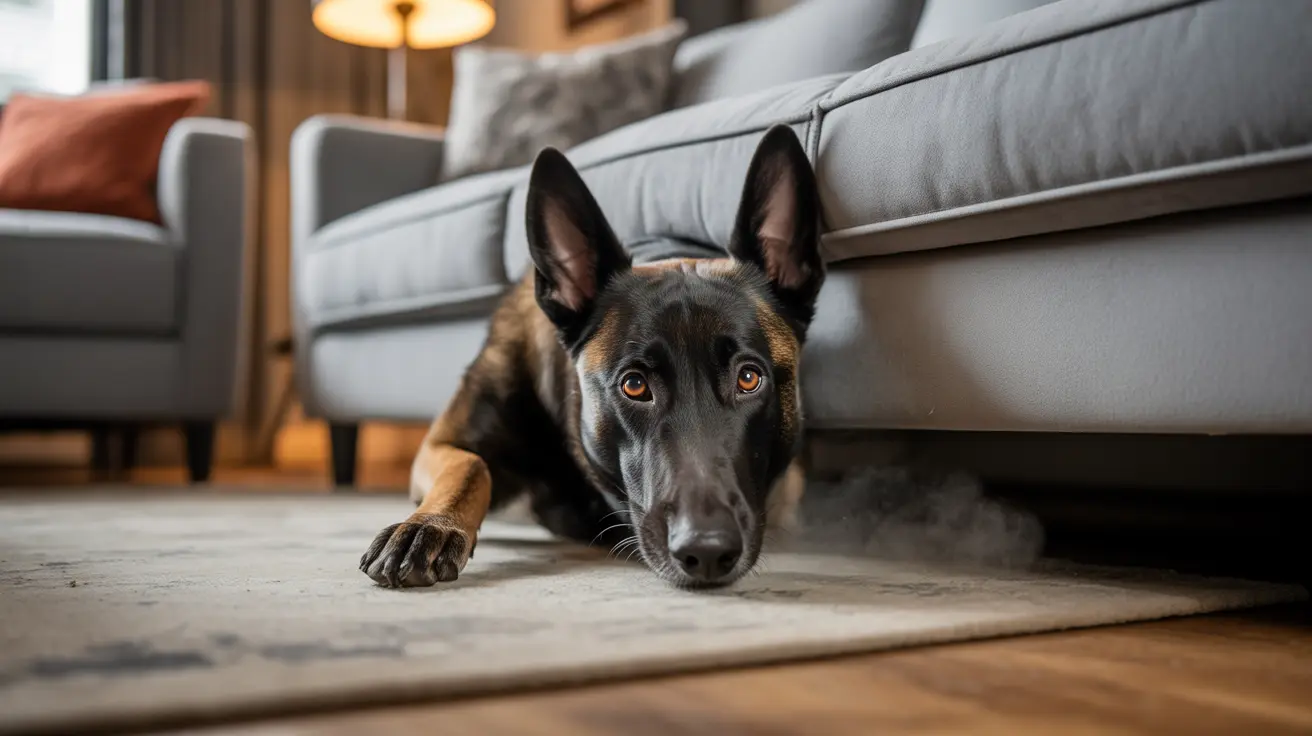When your dog suddenly starts hiding, it can be both puzzling and concerning. This behavior, while often normal, can sometimes signal underlying issues that require attention. Understanding why dogs hide and knowing when to be concerned can help ensure your pet's wellbeing and peace of mind.
From natural instincts to stress responses, dogs hide for various reasons. Let's explore the common causes of this behavior and learn how to address it appropriately.
Common Reasons for Dog Hiding Behavior
Natural Instincts and Den Seeking
Dogs are descendants of den-dwelling animals, and many still carry this instinctive desire for enclosed, safe spaces. Your dog might hide under furniture or in quiet corners simply because it feels natural and comfortable, much like their wild ancestors would seek out dens for security and rest.
Fear and Anxiety Triggers
Environmental stressors often prompt dogs to seek hiding spots. Common triggers include:
- Thunderstorms and fireworks
- Construction noise or loud vehicles
- Unfamiliar visitors
- Changes in household routine
- New pets or family members
Medical and Physical Causes
Sometimes, hiding can indicate health issues. Dogs instinctively try to protect themselves when feeling vulnerable due to:
- Pain or injury
- Illness or infection
- Gastrointestinal problems
- Age-related conditions
- Joint discomfort or arthritis
When to Be Concerned About Your Dog's Hiding
Changes in Hiding Patterns
Pay particular attention if your dog's hiding behavior suddenly changes or increases. This could indicate underlying problems requiring veterinary attention, especially when accompanied by:
- Changes in appetite or water consumption
- Lethargy or decreased activity
- Unusual aggression or withdrawal
- Physical symptoms like limping or vomiting
Environmental Stress Factors
Consider recent changes in your home environment that might be causing stress:
- Home renovations or moves
- New household members
- Changes in daily routines
- Nearby construction or unusual noise
How to Help Your Hiding Dog
Creating Safe Spaces
Provide designated "safe zones" where your dog can retreat when feeling overwhelmed:
- Set up comfortable crates with soft bedding
- Create quiet corners away from household traffic
- Maintain accessible hiding spots that you're comfortable with
- Consider using calming aids like white noise machines
Addressing Anxiety and Fear
Help your dog cope with stress through positive reinforcement and training:
- Never force them out of hiding
- Use treats and praise to encourage confidence
- Gradually desensitize them to fear triggers
- Maintain consistent daily routines
Frequently Asked Questions
Why is my dog hiding suddenly under the bed or furniture?
Sudden hiding often results from immediate stressors like loud noises, unfamiliar situations, or physical discomfort. If this behavior is new and persistent, especially with other symptoms, consult your veterinarian.
Could my dog's hiding behavior be a sign of illness or pain?
Yes, hiding can be a sign of illness or pain. Dogs instinctively hide when feeling unwell to protect themselves. If hiding is accompanied by changes in eating, drinking, or activity levels, seek veterinary care.
How can I help my dog feel less anxious and stop hiding during storms or loud noises?
Create a safe space, use sound masking, consider anxiety wraps, and gradually desensitize your dog to noise. Some dogs benefit from anti-anxiety medications prescribed by a veterinarian.
Is it normal for dogs to hide their toys or food, and why do they do it?
Yes, this is normal "caching" behavior inherited from wild ancestors. Dogs may hide resources to save them for later or protect them from others, even when unnecessary in a domestic setting.
When should I worry and take my dog to the vet because of excessive hiding?
Consult a veterinarian if hiding is sudden, excessive, or accompanied by behavioral changes, physical symptoms, or changes in eating/drinking habits. Better to check early than miss a developing health issue.
Conclusion
While dog hiding can be perfectly normal behavior, understanding the underlying causes helps you better support your pet's needs. Pay attention to changes in hiding patterns, address environmental stressors, and don't hesitate to seek professional help when needed. With proper attention and care, you can help ensure your dog feels secure and comfortable in their environment.






